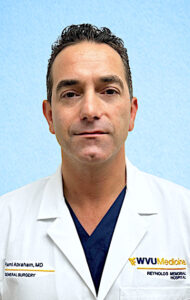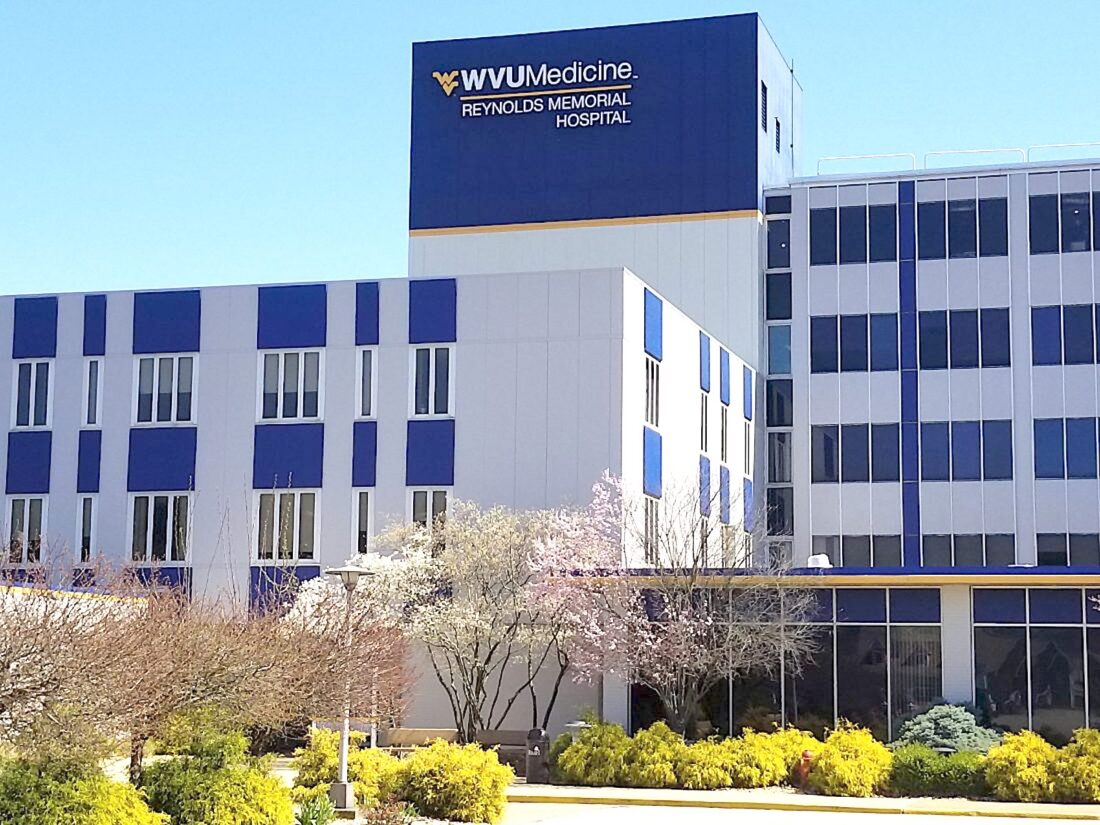
ARTICLE: Reynolds Memorial Hospital General Surgeon Believes The Future of Robotics in the Medical Field Is Bright


Reynolds Memorial Hospital General Surgeon Believes The Future of Robotics in the Medical Field Is Bright

Photos provided
Under the WVU Medicine umbrella, Reynolds Memorial Hospital in Glen Dale is introducing new treatments and technology for patients, including its evolving robotic surgery program.
GLEN DALE — As robotic surgery opportunities expand at WVU Medicine Reynolds Memorial Hospital, Robotic General Surgeon Dr. Rami Abraham is excited to introduce the technology to more staff and patients.
Abraham came to work at Reynolds in March 2024 as the hospital was starting a robotics program and needed an experienced robotic surgeon. Abraham first encountered robotic surgery during the second half of his surgical residency at the University of Pittsburgh Medical Center, which allowed him to acquire “a lot of experience” with the technology.
“During the second half of my residency, robotic surgery was kind of on an upswing and gaining popularity, so I was fortunate in that I received a mixture of experience in traditional laparoscopic surgery procedures and became confident in robotic surgery,” Abraham said. “I picked up robotics very quickly, probably less than a year into my practice. From there, over the subsequent four and a half years, I became one of the busiest robotic surgeons in the Pittsburgh area.”
Robotic surgery is performed by a surgeon controlling robotic arms that can articulate “nearly 360 degrees,” Abraham said, noting these arms hold various surgical instruments that the doctor controls through a console to perform the procedure.
Abraham largely uses the technology to perform hernia repair surgeries. He has performed almost 1,000 robotic procedures.
“The tips of traditional laparoscopic instruments do not articulate, which means you are limited by the maneuvers you can do,” Abraham said. “The tips of the robotic instruments are like my hands, so they can perform the same articulation that hands can do. This allows me to maneuver around structures in the body more efficiently and safely.”
Reynolds’ robotic surgery program launched in June. The hospital currently has one DaVinci Robotic Surgical System, which Abraham and two other general surgery partners use for procedures.
In addition to introducing staff to the technology, Abraham serves as the lead surgeon on Reynolds’ Robotics Committee.
The group monitors the progress of robotics at the hospital and devises ways to improve the program.
“I advise the committee based on my experience and guide them during the meetings,” Abraham said. “I don’t want to elevate myself above anybody else — I just have more experience with the technology. We want to keep the focus centered on the patient, optimizing what we can with the technology and getting everybody as comfortable as they can with the robot.”
Abraham wants to continue to “get the word” out regarding the robotic surgery technology available at Reynolds to increase the number of robotic surgeries performed.
He also hopes to expand surgeons’ access to the robot and believes the hospital is on pace to incorporate the technology “like any other equipment.”
“If the surgeon feels the robot is what would work best in their hands for a procedure, we want it to be available 24/7, 365 days a year,” Abraham said.
“Patients at night or after hours on the weekends deserve access to technology in the hands of qualified surgeons to give them the best outcome possible.”
As Reynolds expands its use of robotic surgery, Abraham is monitoring further developments in the technology.
He noted that the future of robotics in the medical field is “super bright,” with continuous improvements being developed in the technology.
“I try to go to a robotics conference every year, and the innovations they’re coming up with are incredible,” Abraham said.
“A new integration called the [Intuitive] Hub can record basically every procedure you do in real-time so you can go back and review what you did. That’s an incredible resource to review the surgical video with residents and fellows as a teaching tool.”